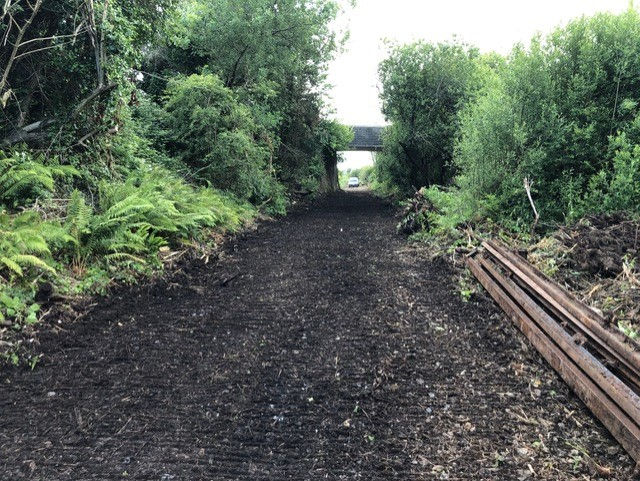The Project
This involved the initial stages of transforming the old railway from Midleton to Youghal (23km) into a Greenway. Around forty years of growth had allowed the railway corridor to turn into an overgrown oasis for flora and fauna. The railway line itself crosses through a mosaic of habitats and includes urban settings, wooded, agricultural and wetland areas. Protected species such as Hen Harriers, Badgers and Otters were recorded along the route. Salmonid rivers are also crossed and bound the route. Invasive species such as knotweed were amongst the constraints encountered. All of these environmental conditions had to be catered for in an environmentally friendly fashion to enable the line to be reopened. Heritage of the old railway also had to looked after with old junctions, signal posts and gates still extant on the line.

The Rivus Solution
Rivus proposed a methodology and a Construction Environmental management Plan (CEMP) that allowed for the sensitive nature of the project. A overall target for the completed greenway was a no overall loss of biodiversity. Rivus tendered for the clearance works using a selective thinning methodology for the opening up of the line. Teams of arborists and ecologists undertook the clearance together in a sensitive way working. Consultations and guidance from the National Parks and Wildlife Service (NPWS) were followed. Disturbance to hen harriers in Ballyverghan Marsh was avoided by working to set hours during the winter months. Approval from NPWS was granted for work close to mammal refuges and for the translocation of frog spawn.
Working with the local landowners was also key in this project as many were using original crossing points for the decades of closure. A dedicated liaison team ensured that the landowners were kept apprised of works ensuring that they were not impacted by the on-going works.

The Result
The result was that clearance was undertaken in an environmentally sensitive manner, allowing for all the ecological constraints identified. A corridor was opened to enable future works whilst conserving habitats along the route. Key mammal and nationally important bird sites were left undisturbed and signature trees were identified along the route which were preserved and root damage of key trees was avoided. No invasive plants were spread in or off site with a management and treatment plan implemented.

Comments